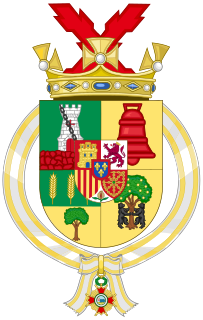 W
WAn officer of arms is a person appointed by a sovereign or state with authority to perform one or more of the following functions:to control and initiate armorial matters; to arrange and participate in ceremonies of state; to conserve and interpret heraldic and genealogical records.
 W
WA private officer of arms is one of the heralds and pursuivants appointed by great noble houses to handle all heraldic and genealogical questions.
 W
WColonel Osmond Barnes was a British officer of the Indian Army and Chief Herald of India.
 W
WFrederick Gordon Brownell was a South African herald, vexillologist, and genealogist.
 W
WVicente de Cadenas y Vicent was a Cronista Rey de Armas of the Kingdom of Spain.
 W
WAdolf Maximilian Ferdinand Gritzner was a German expert on heraldry and a herald in the Ministry of the Interior in Berlin. His reference book on orders of knighthood was still in print in 2000. Gritzner was born in Sorau (Żary) and died in Berlin.
 W
WPierre d'Hozier, seigneur de la Garde, was a French genealogist.
 W
WJoseph van den Leene, lord of Lodinsart, Castillon, and Huyseghem, was the First King of Arms of the Low Countries, the Duchy of Burgundy, and the Order of the Golden Fleece, this office was called the Toison d'Or King of Arms. On 13 June 1678, he was admitted to the House of Serhuyghs of the Seven Noble Houses of Brussels.
 W
WMajor General Nawab Sir Umar Hayat Khan Tiwana, was a Rajput soldier of the Indian Empire, one of the largest landholders in the Punjab, and an elected member of the Council of State of India.
 W
WKing of Arms is the senior rank of an officer of arms. In many heraldic traditions, only a king of arms has the authority to grant armorial bearings and sometimes certify genealogies and noble titles. In other traditions, the power has been delegated to other officers of similar rank.
 W
WCommodore Augusto Lasserre (1826-1906) was an officer in the Argentine Navy. He was born in 1826 in Montevideo. Lasserre was promoted to the rank of captain on the 11 June 1852. Later he was promoted to Commander of the Argentine Navy.
 W
WFernando Muñoz Altea was the King of Arms of the Royal House of Bourbon-Two Sicilies. He was a Spanish/Mexican historian, specialised in the study of the aristocratic European colonial families of the Americas. Muñoz Altea was born in Madrid (Spain) on November 22, 1925. He died in Mexico City on March 2, 2018. Don Fernando Muñoz Altea was considered the "Dean of the Kings of Arms", since due to his seniority in the trade, he was one of the very few and genuine Kings of Arms left in the world in his time. The extraordinary quality of his genealogical certifications and of his heraldic designs, which he carried out personally, is internationally renowned.
 W
WA pursuivant or, more correctly, pursuivant of arms, is a junior officer of arms. Most pursuivants are attached to official heraldic authorities, such as the College of Arms in London or the Court of the Lord Lyon in Edinburgh. In the mediaeval era, many great nobles employed their own officers of arms. Today, there still exist some private pursuivants that are not employed by a government authority. In Scotland, for example, several pursuivants of arms have been appointed by Clan Chiefs. These pursuivants of arms look after matters of heraldic and genealogical importance for clan members.
 W
WPaon de Roet, also called Paon de Roët, Sir Payn Roelt, Payne Roet and sometimes Gilles Roet, was a herald and knight from Hainaut who was involved in the early stages of the Hundred Years War. He became attached to the court of King Edward III of England through the king's marriage to Philippa of Hainaut.
 W
WJean le Fèvre de Saint-Remy or Jean Lefebvre de Saint-Remy born in Abbeville, was a Burgundian chronicler during the Hundred Years' War and lord (seigneur) of Saint Remy, la Vacquerie, Avesnes and Morienne. He is also known by the formal title of authority Toison d'or because he served as the King of Arms to the Order of the Golden Fleece.
 W
WThe office called Toison d'or was that of the King of Arms of the Order of the Golden Fleece. Founded in 1431, it was one of the four offices of the Order. The Toison d'or King of Arms was also the primary King of Arms for the Duchy of Burgundy and the Southern Netherlands, and held precedence over all other officers of arms of those lands.